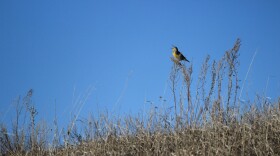If you like to watch meteor showers, the next few weeks could be a real treat. That is because the Delta Aquarids Meteor Shower has already begun, and the Perseids Meteor Shower will overlap with it.
The Delta Aquarids Meteor Shower started on July 12 and will run through August 23. The peak viewing period will occur on the evening of July 28 and early morning of the 29th . One can expect to see around 20 meteors per hour during the peak viewing period, and with a new moon, viewing should be quite good.
Meteor showers are named according to their radiant, or the point from which they appear to originate. In this case, they appear to originate in the constellation Aquarius. The best viewing will be after midnight. Although the meteors will appear to originate from within the constellation Aquarius, they may be observed in other areas of the sky.
The Delta Aquarids overlap with the more widely known Perseids Meteor Shower. The Perseids should be visible from July 17 to August 24 with the peak viewing period occurring on the evening of August 12 and early morning hours of the 13th. However, there will be a full moon and supermoon on the August 12, so that certainly will not help with the viewing. Even at that, the Perseids are known to produce up to 60 meteors per hour, so it is still worth checking out.
Meteors of course are produced by bits of comets passing through the earth’s atmosphere. Comets are mixtures of ice, rock, and dust a few miles in diameter. When they pass near the sun, the heat causes the comet to shed ice and particles. These mostly sand-sized pieces of ice and rock create a debris field in outer space. When the earth passes through these debris fields, the pieces collide with the atmosphere and become glowing hot. Viewed from earth, they are often referred to as “falling stars.”
Hopefully there will be some clear skies over the next few weeks. So, consider finding a dark place out of town, then settling into a comfortable lawn chair or throwing down a blanket, and just watching the stars for a while. And while you are watching for those meteors, you may also have some good entertainment spotting all those satellites traveling overhead.





